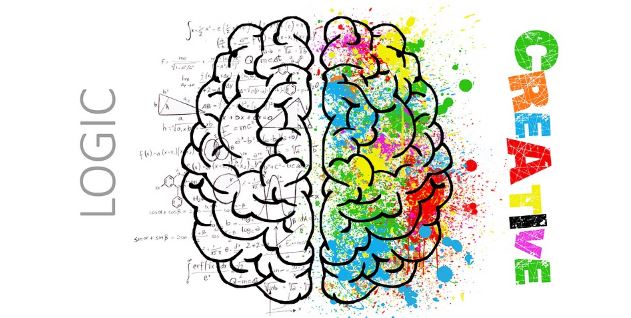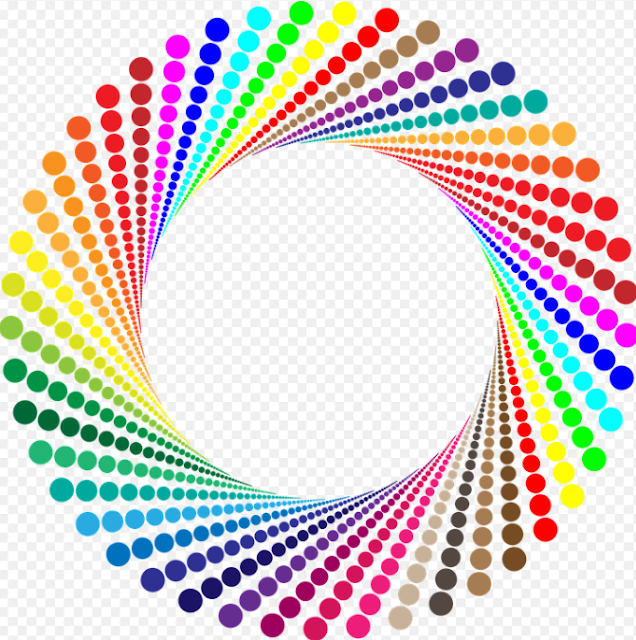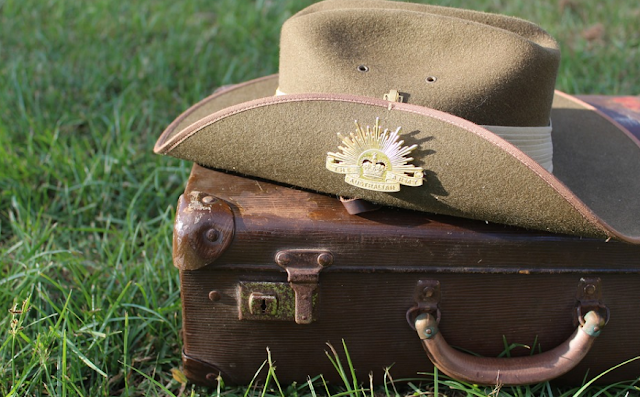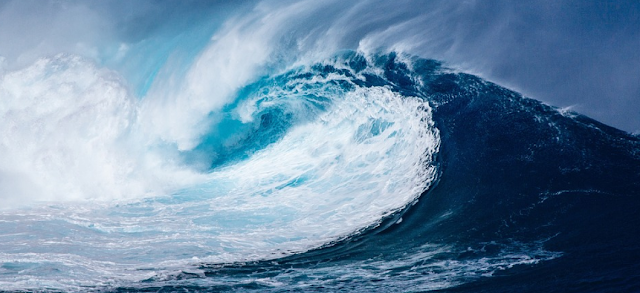THE COLOR PSYCHOLOGY
Color Psychology
Color psychology is the study that shows how our brain identifies and transforms colors into sensations. The influence of colours can be observed in advertising, in the decoration of houses and offices, in fashion, in the way in which we would like to be seen, among others.
Colour plays an important role in how your brand is perceived. Whether you're a fashion brand trying to connect with a young audience or a medical supply store trying to build customer confidence, you can study the meaning of colors to help you attract and better connect with your ideal customer. Color psychology can be used to help build a strong, easy-to-identify brand. In this article, we will explain what color psychology is and educate you about the meanings of the most popular colors used.
¿What is color psychology?
Color psychology is the study of colors in relation to human behavior. Its objective is to determine how color affects our daily decisions, such as the items we buy. Does it force us to buy the color of a dress? Do the colors of a package make us choose one brand over another? Does the color of an icon make us more likely to click on it? The short answer is yes. But the part why is a little more complicated. The meanings of the colors can have an impact on why we prefer certain colors over others. The same color can also have different meanings that depend on our education, gender, location, values and a variety of other factors.
Psychology of Red
Marketing colours such as red can attract attention. The meaning of red is associated with emotion, passion, danger, energy and action. You may have noticed that some brands use red for "order now" buttons or for packaging as a way to stand out on the shelf. In color psychology, red is the most intense color. And so, it can provoke the strongest emotions. Redt can also be dangerous, so use color sparingly. If you add red to your website, save it for the call to action or sale icons if it contrasts well with your store design.
Red is the iconic color used for brands like Coca Cola and YouTube. Red tends to encourage appetite, so brands like Coca Cola often use it in their brand. They also use words like happiness in their brand, so they use the color red to generate enthusiasm. YouTube is likely to use the color red because of the excitement of watching videos online. Notice how the red part of your logo is the play button that can help force someone to act. It encourages you to want to press play on their videos.
Orange Psychology
In color psychology, orange represents creativity, adventure, enthusiasm, success and balance. Orange adds a little fun to any image, website or marketing material you find yourself in. Although it attracts color, it's not as dominant as red. Many marketers still use color to draw attention to actions or areas of a website that they also want to draw attention to.
The meaning of Orange color shines in logos like Nickelodeon and The Home Depot. Nickelodeon is a children's channel, so the logo accurately represents the creativity and enthusiasm that a children's program would need through its playful orange color. The Home Depot sells products you can use for your home. Many do it themselves (DIY) and turn to Home Depot to buy products to renovate their home or make adjustments. The orange logo here also represents creativity.
Psychology of Yellow
In color psychology, the meaning of color for yellow revolves around sunlight. It evokes feelings of happiness, positivity, optimism and summer, but also of deception and warning. Some brands choose to use a cheerful yellow color as a background or border for the design of their website. You can also choose to use yellow for your 'free shipping' bar at the top of your website if it matches the rest of your website design. A little touch of yellow can help your website visitors associate your store with something positive.
Yellow is used by brands such as Ferrari and Ikea. Many people dream of driving a Ferrari. The luxury brand is associated with this feeling of happiness, summer and a carefree lifestyle. The Ikea brand also uses the yellowish color in its brand. What does buying furniture have to do with happiness? Well, let's see who's buying those products. Many people who have just bought their first home or are moving for the first time will turn to Ikea to buy products to furnish their home. This milestone is often filled with happiness and optimism about the new change that makes yellow a great color to associate with the brand.
Pink color psychology
Pink is a popular color for brands that serve primarily a female audience. In color psychology, the meaning of pink revolves around femininity, joy, immaturity and unconditional love. Some brands have chosen to use pink for product packaging, especially for girls' toys. While other brands highlight pink in their logo, website design or to highlight key messages.
Since the meaning of pink includes femininity, it's no wonder that brands like Victoria's Secret and Barbie use color so intensely. Victoria's Secret even named one of its Pink brands. On their website, they use a combination of pink and black to highlight key marketing details. Their logo and certain marketing messages also use pink. On Barbie's website, the CTAs are in a bright pink. Their top navigation and drop-down menu also subtly use color. And, of course, your product packaging and logo reinforce the feminine pink in your brand.
Psychology of the color green
In color psychology, green is highly connected with nature and money. Growth, fertility, health and generosity are some of the positive color meanings for color. The meaning of color for green also carries some negative associations such as envy. If you are in the niche of health or exercise, you can choose to add more green to your online store. For example, the image or logo on your home page may include a green background.
The use of green is popular with brands like John Deere and Roots. The whole John Deere brand revolves around nature. Their product line focuses on gardening, agriculture, lawn care equipment and more. Green is so ingrained in your brand that even your team has the same shade of green as your logo.
That way, when someone sees that product, they'll immediately know it's a John Deere. Roots is a fashion retailer. However, as you browse their banner images and marketing materials, you will often find their models in natural outdoor environments. The green logo combines well with their images of nature and helps them attract outdoor enthusiasts as their target market. So, even if your products don't necessarily link to a niche, you can use color to help you target a specific demographic.
Blue Color of Psychology
In color psychology, the meaning of the color blue is closely related to the sea and the sky. Stability, harmony, peace, calmness and confidence are just some of the feelings your customer may feel about your brand when you integrate blue into your brand. Conversely, blue can also have some negative color meanings, such as depression, and can cause a feeling of coldness. Blue can be used in the logo of your website or in the top navigation of your website. Some retailers add their warranty, trust certification or free shipping icons in a blue color to strengthen the trust aspect for which the color is known.
Technology brands such as Facebook, Twitter and Skype often use blue in their marketing. But retailers like Walmart and Oral B also use colour. The blue in the Walmart logo can help position the brand as reliable, reliable and relaxing. After all, Walmart is a place where you can buy groceries and shop in one convenient location. Oral B is a dental health brand that sells toothbrushes. Healthcare niches, such as Oral B, generally wear blue on their brand to help people associate the brand with a quality, reliable, and safe product.
Purple color of Psychology
In color psychology, purple is a real color. The meaning of purple is related to power, nobility, luxury, wisdom and spirituality. But avoid using color too much as it can cause feelings of frustration. Some perceive its excessive use as arrogant. You can add touches of purple to your website design, such as your free shipping bar, your logo, and an accent color on your graphics.
Purple is a brand of colors like the use of Hallmark and Yahoo. As you browse both websites, you will notice that purple is an accent color. At Hallmark, the logo and top navigation are purple, but the rest of the website uses a variety of other colors. In Yahoo, the logo, the main navigation words and Yahoo icons such as Mail use the color purple.
Psychology of white color
In color psychology, white shows innocence, kindness, cleanliness and humility. Keep in mind that this is the meaning in American culture. In some parts of the world, white has the opposite meaning. You will want to keep this in mind according to the audience you serve. The meaning of color for white also has a negative side where it symbolizes sterility and cold. On an e-commerce website, white tends to be the most commonly used color. You'll probably use it as the background color for your product photo. Your pages will probably have a white background with a black font. This is because the black font on a white background is the best combination of colors for ease of reading.
White is the colour that ASOS and Adidas use in their marketing. In ASOS, the words in the header, logo and background are white. When the background is grey or black, the font is white and when the background is white the font is black. In the Adidas online store, the top navigation is black. The use of a white logo helps to create contrast. Since their background is white, they have chosen to use gray as the background for product photos to add another tone to the mix. Many brands that have white as their center color tend to combine it with black or gray.
Psychology of Black color
Black is a popular color in retail. In color psychology, the meaning of black color is a symbol of mystery, power, elegance, and sophistication. In contrast, the meaning of color can also evoke emotions such as sadness and anger. Many fashion retailers have used black in their logos. Black is also a popular color for text, as it is an easy-to-read color. Some brands choose to use black and white photos for lifestyle banner images or icons to create a certain tone or consistency on their website.
Many retailers in the fashion niche especially use the black call to action that contrasts well with a white background. Nike also uses a black, white and gray color scheme for its website. Your logo and font are black throughout your website. So, making the website easy to read. Like Chanel, his call to action is also black, which makes the visual emphasis be added to the item in his "bag" (cart).
Meaning of the color gray
In color psychology, gray represents neutrality and balance. Its meaning of color probably comes from being the tone between black and white. However, gray has some negative connotations, particularly when it comes to depression and loss. Its absence of color makes it boring. Grey can be used for font color, headers, graphics and even products to attract a massive audience.Brown color psychology
Brown is an earthy color. After all, it is the color of earth, wood and stone. So, naturally, color psychology emphasizes that the meaning of brown is related to comfort, safety and nature. In marketing, you will find that brown is often used for natural products and food. The color brown is a color that appears in logos, banner images and sometimes even in the text because of its contrast on a white background.














Comentarios
Publicar un comentario